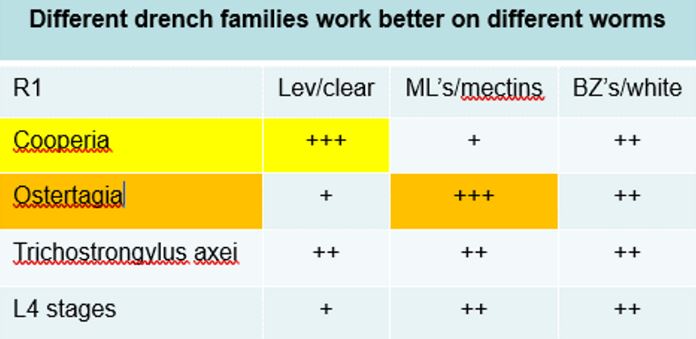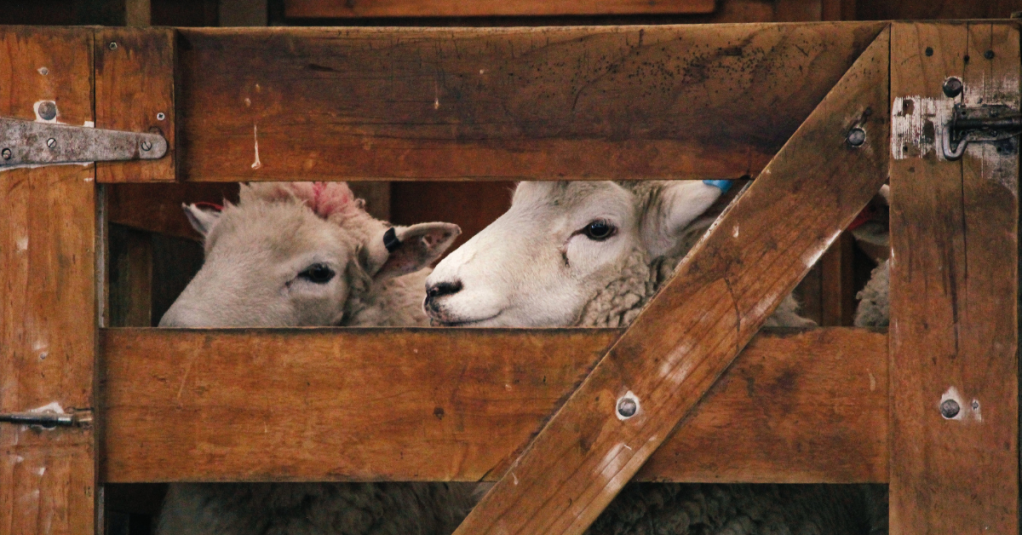

Use Effective Drench Combinations to Ensure Optimal Lamb Growth Rates this Spring
Managing Parasites Effectively
A key driver of farm productivity is the weight of lambs at weaning. If lamb growth rates are good and more lambs are at killable weights at weaning this reduces the number of lambs you have to keep on into the summer. Gastrointestinal parasites can have a negative effect on growth rates1-3. The key points of an effective parasite management programme are to manage pastures to reduce challenge, use effective combination drenches and utilise refugia to reduce the likelihood of drench resistance in the future. Around lambing, when the ewe’s immune system is impaired because of stress, parasites inside the ewe’s gut produce eggs, which are deposited onto the paddock. In spring, along with larvae that have overwintered on the pasture, the larvae emerging from these eggs are taken up by lambs and depress growth rates up until weaning. If the spring pasture growth is slow, or pasture covers are low, this negative effect can be increased. A drench pre-weaning should be considered to maximise growth rates1.
Where drenching is required, all farmers should be using an effective combination drench2. Farmers can find out what drenches are working on their farm by completing a Faecal Egg Count Reduction Test or FECRT3. If a farmer is unsure of their drench resistance status, they should use a triple combination drench such as Alliance®.
Combination drenches have been proven to reduce the selection pressure for drench resistance. The chance of a worm being resistant to all active ingredients in a combination drench is significantly lower compared to using drenches with fewer actives, and the proportion of resistant parasites surviving on farm compared to sensitive parasites on pasture is less.
Cattle and sheep do not share the same parasites so pasture grazed with cattle will have reduced numbers of infective larvae for sheep on it and vice versa. By rotating the grazing of sheep with cattle in the spring, the growth rates of both classes of stock can be improved2.
Refugia is another tool that farmers can use to reduce the selection for drench resistance 1-3. Essentially refugia is allowing parasites from undrenched animals to populate pasture diluting any resistant larvae bred from worms that may have survived drenching. This could be leaving a proportion of the mob undrenched, putting drenched animals onto pasture that has had undrenched animals grazing on it previously, or following drenched animals with a mob of undrenched animals.
As it takes most parasites 21 days to start producing eggs once ingested, using a short-acting drench at 28-day intervals or more, ensures that some sensitive parasites, not exposed to drench, reproduce before another drench is used. Extending drenching intervals beyond 28 days will apply a greater level of refugia allowing more worms not exposed the worms not exposed to drench to complete their lifecycle i.e., to reproduce and lay eggs.
Reducing the numbers of young stock on farm is one way that you can reduce the impact of parasites on production, their reliance on drenching and the potential for developing drench resistance in the future. Ensuring optimal growth rates in spring, hence sending more lambs to the works early, is one way that you can achieve this.
References:
- DM Leathwick , TS Waghorn , CM Miller , DS Atkinson , NA Haack & A-M Oliver (2006) Selective and on-demand drenching of lambs: Impact on parasite populations and performance of lambs, New Zealand Veterinary Journal, 54:6, 305-312
- KE Lawrence , DM Leathwick , AP Rhodes , R Jackson , C Heuer , WE Pomroy , DM West , TS Waghorn & JR Moffat (2007) Management of gastrointestinal nematode parasites on sheep farms in New Zealand, New Zealand Veterinary Journal, 55:5, 228-234
- TS Waghorn, JS Knight & DM Leathwick (2014) The distribution and anthelmintic resistance status of Trichostrongylus colubriformis, T. vitrinus and T.axei in lambs in New Zealand, New Zealand Veterinary Journal, 62:3, 152-159

Key: +++ is high efficacy, ++ moderate efficacy, + low efficacy
NOTE: Using two or more drench families reduces the risk of developing drench resistance


